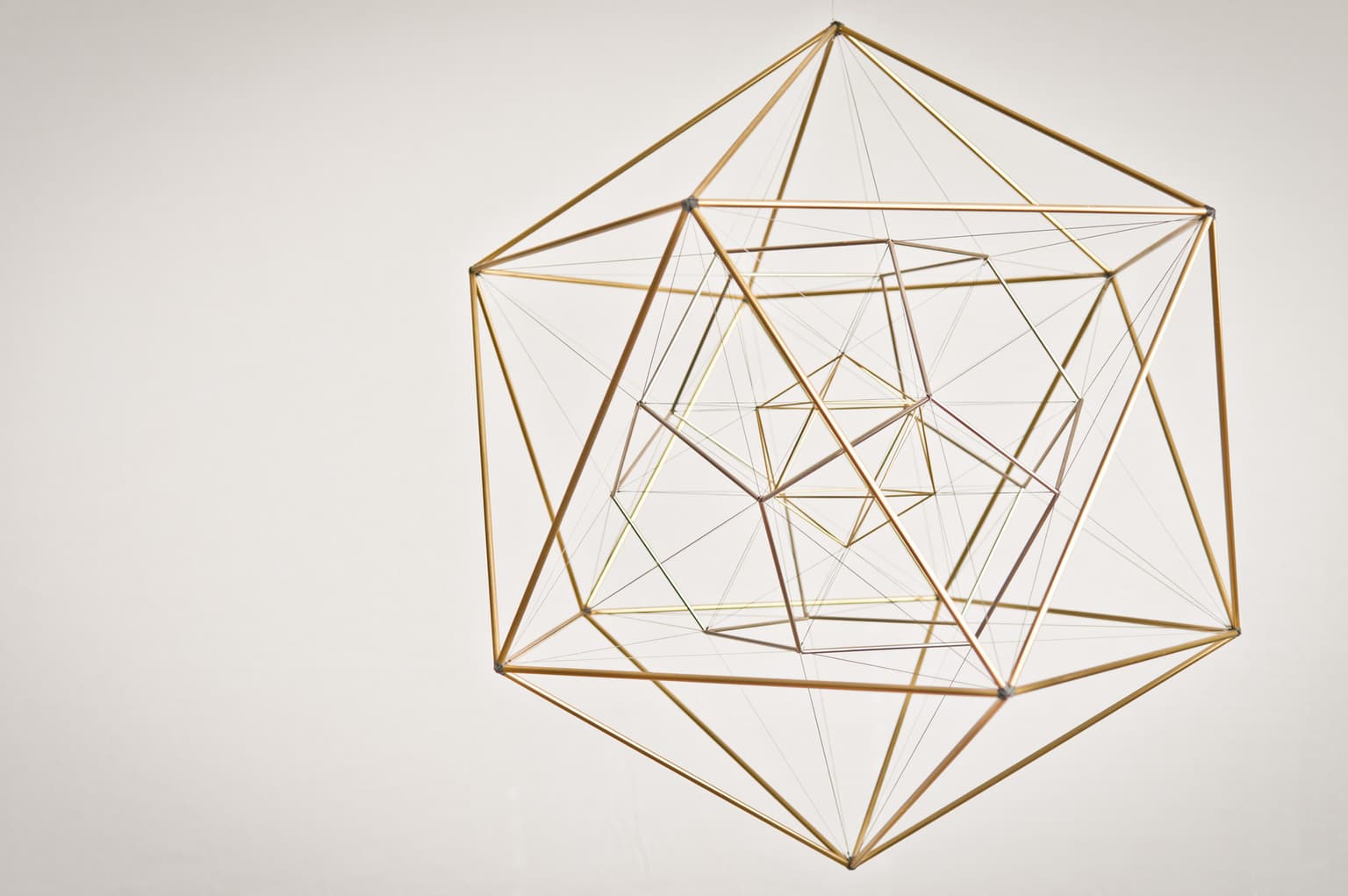2014 Joint Mathematics Meetings
Martin Levin
Artists
Martin Levin
Portland, Oregon, USA
Statement
The Platonic solids are in a way quite simple geometric forms, and yet as one contemplates them and builds up and holds the forms in one's imagination, they become quite captivating. For instance, lines joining opposite vertices all lie on a single point at the center, while lines joining opposite faces all lie on a single plane at infinity. The model shown here is designed to suggest shapes that are not solid blocks, but rather created by lines and planes coming from the infinite periphery.
Artworks

As Above So Below
17" x 17" x 17"
brass and aluminum tubing, beading wire and string, and 3D printed nylon joints
2013
Beginning with an icosahedron and then filling in its diagonals creates a dodecahedron inside. Repeating the process creates a second icosahedron with orientation identical to the first, but with size reduced by the cube of the golden mean. One can imagine the process continued further to ever smaller figures inwardly or ever larger ones on the outside. This model shows the duality (in the sense of projective geometry) between the icosahedron and dodecahedron; the vertices of each align radially with the midpoints of the faces of the other.